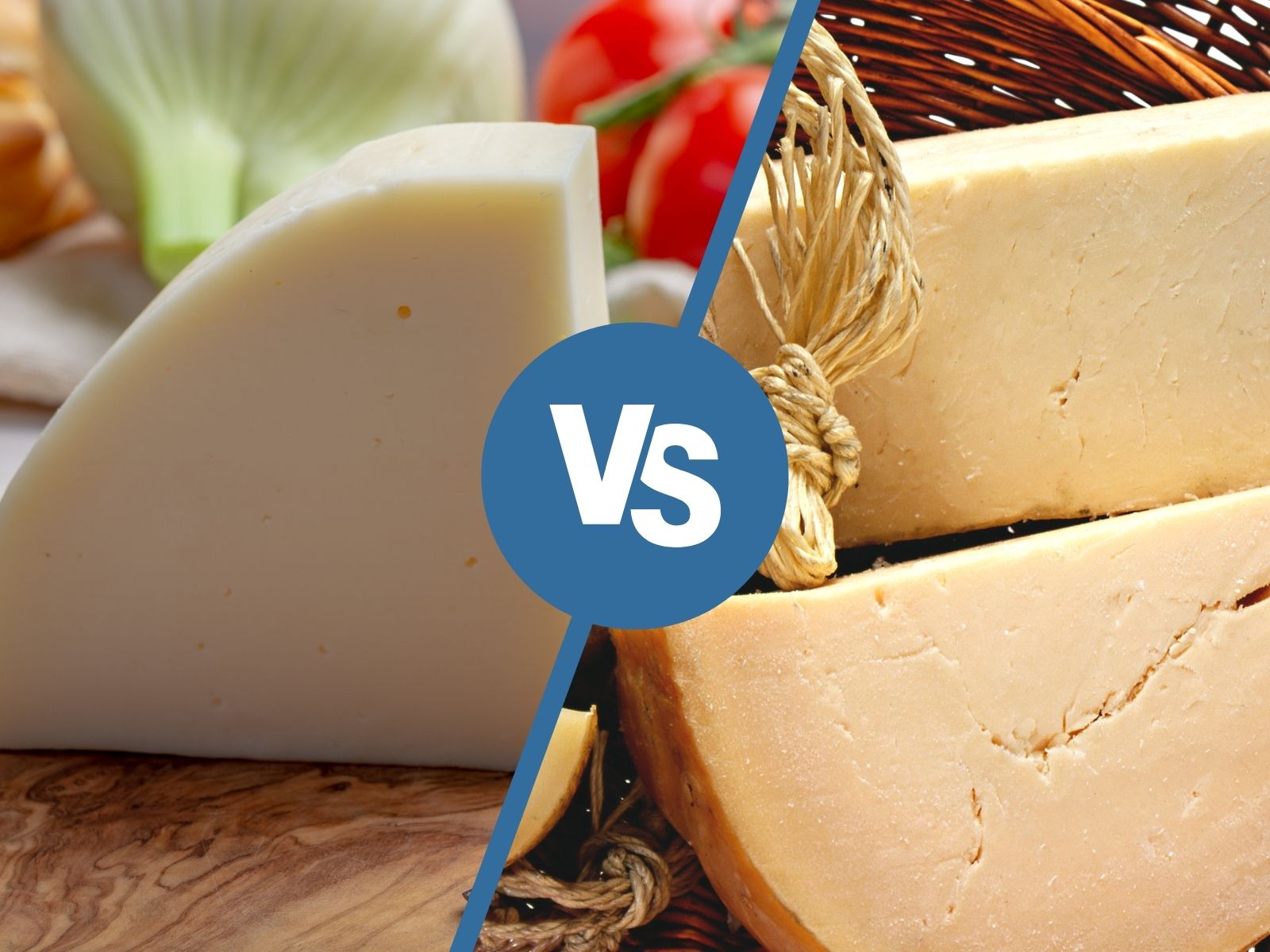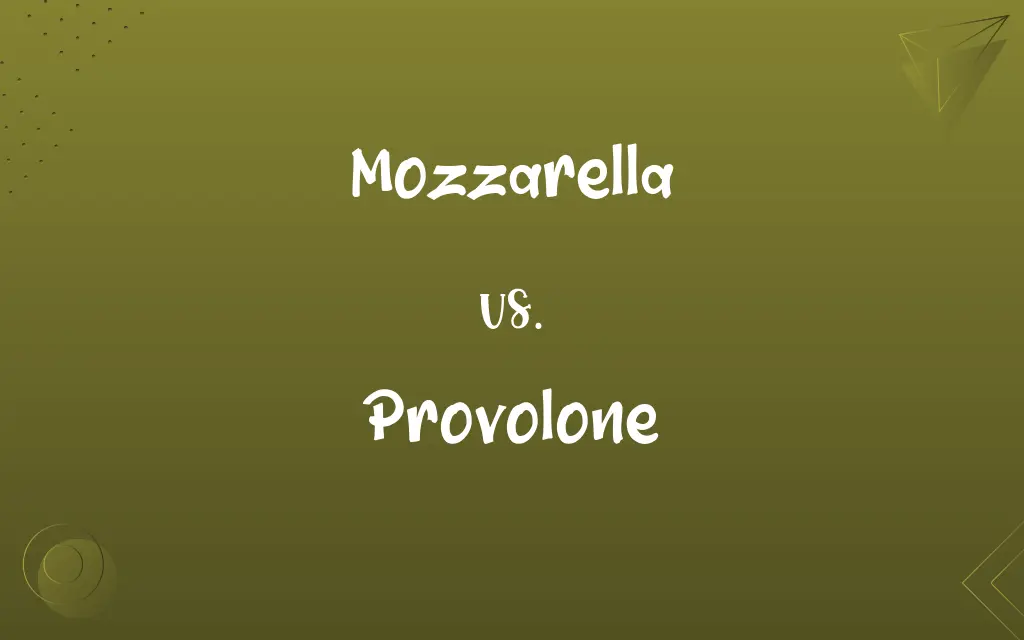Difference Between Provolone And Mozzarella: A Comprehensive Guide
When it comes to Italian cheeses, provolone and mozzarella are two of the most popular options that often find themselves at the center of culinary conversations. While both cheeses originate from Italy and share some similarities, they have distinct characteristics that set them apart. Understanding the difference between provolone and mozzarella can enhance your cooking experience and help you make informed choices in the kitchen.
From their origins to their textures, flavors, and culinary uses, this article will delve deep into the nuances of these two cheeses. Whether you're a home cook or a professional chef, knowing the distinction between these two can elevate your dishes to the next level.
In this comprehensive guide, we'll explore the history, nutritional value, and versatility of both provolone and mozzarella. By the end of this article, you'll have a clear understanding of when to use each cheese and how they complement various recipes. Let's dive in!
Read also:Katie Sigmond Eroem Unveiling The Life And Legacy Of A Rising Star
Table of Contents
- Origins of Provolone and Mozzarella
- Types of Provolone and Mozzarella
- Flavor Profiles
- Texture Differences
- Nutritional Value
- Culinary Uses
- Storage Tips
- Substitutions and Alternatives
- Health Benefits and Concerns
- Conclusion
Origins of Provolone and Mozzarella
Where Do These Cheeses Come From?
Both provolone and mozzarella have deep roots in Italian culinary traditions, but their origins differ slightly. Provolone, a semi-hard cheese, originated in southern Italy, specifically in the regions of Campania and Basilicata. On the other hand, mozzarella, a soft cheese, is believed to have originated in the Campania region as well, but its history dates back to the ancient Roman era.
Provolone was traditionally made from buffalo milk, but today, it is commonly made from cow's milk. Mozzarella, on the other hand, was originally made from water buffalo milk, which gave it its rich and creamy texture. However, due to availability and cost, many modern mozzarellas are now made from cow's milk.
Types of Provolone and Mozzarella
Provolone Variations
Provolone comes in two main varieties: Provolone Dolce and Provolone Piccante. Provolone Dolce is mild and sweet, with a smooth texture, making it ideal for sandwiches and snacking. Provolone Piccante, on the other hand, is aged for a longer period, resulting in a sharper and more intense flavor.
Mozzarella Variations
Mozzarella also has several types, including Mozzarella di Bufala, Fior di Latte, and Mozzarella Affumicata. Mozzarella di Bufala is made from water buffalo milk and is considered the most premium type. Fior di Latte is made from cow's milk and is more widely available. Mozzarella Affumicata is smoked mozzarella, offering a unique smoky flavor.
Flavor Profiles
The flavor of provolone and mozzarella varies significantly due to differences in production methods and aging processes. Provolone's flavor can range from mild and buttery to sharp and tangy, depending on its aging period. Mozzarella, however, is known for its delicate and milky taste, which makes it a favorite for pizza and salads.
- Provolone Dolce: Mild and sweet
- Provolone Piccante: Sharp and tangy
- Mozzarella: Delicate and milky
Texture Differences
Texture plays a crucial role in determining how these cheeses are used in cooking. Provolone has a firmer texture, making it ideal for slicing and melting. Mozzarella, on the other hand, is soft and elastic, which makes it perfect for stretching and melting into a gooey consistency.
Read also:Telly Savalas The Iconic Star Who Redefined Television And Cinema
Nutritional Value
Comparing Nutritional Content
Both provolone and mozzarella offer nutritional benefits, but their calorie and fat content differ. Mozzarella is generally lower in calories and fat compared to provolone, making it a preferred choice for those watching their weight. However, provolone is rich in calcium and protein, which are essential for bone health.
| Cheese | Calories per 100g | Fat (g) | Protein (g) |
|---|---|---|---|
| Provolone | 353 | 27 | 25 |
| Mozzarella | 280 | 22 | 18 |
Culinary Uses
Provolone in Cooking
Provolone's versatility makes it a staple in many dishes. It can be melted over sandwiches, used as a topping for soups, or grated over pasta dishes. Its ability to melt smoothly without becoming greasy adds a rich texture to any meal.
Mozzarella in Cooking
Mozzarella is most famously used in pizza and Caprese salads. Its ability to melt and stretch makes it an ideal cheese for baked dishes like lasagna and baked ziti. Its mild flavor also allows it to complement a wide range of ingredients without overpowering them.
Storage Tips
Proper storage is essential to maintain the quality and flavor of both cheeses. Provolone should be stored in a cool, dry place, while mozzarella should be kept in its brine or wrapped in plastic to retain its moisture. Always refrigerate both cheeses to extend their shelf life.
Substitutions and Alternatives
If you're out of provolone or mozzarella, there are several alternatives you can consider. For provolone, you can use cheddar or Swiss cheese as substitutes. For mozzarella,zzarella, you can try using ricotta or burrata for a similar texture and flavor.
Health Benefits and Concerns
Both cheeses offer health benefits when consumed in moderation. They are rich in calcium, which supports bone health, and protein, which aids in muscle development. However, they are also high in saturated fats, so it's important to balance their consumption with a healthy diet.
Conclusion
In conclusion, understanding the difference between provolone and mozzarella can greatly enhance your culinary experience. From their origins and flavor profiles to their nutritional value and culinary uses, each cheese brings something unique to the table. Whether you're making a classic Caprese salad or crafting a gourmet sandwich, these cheeses are sure to add depth and richness to your dishes.
We invite you to share your thoughts and experiences with provolone and mozzarella in the comments below. Have you tried substituting one for the other? What are your favorite recipes using these cheeses? Don't forget to explore our other articles for more insights into the world of cheese and beyond!
Data sources for this article include reputable culinary websites such as Food Network and Epicurious, as well as scientific journals on nutrition and dairy science.


